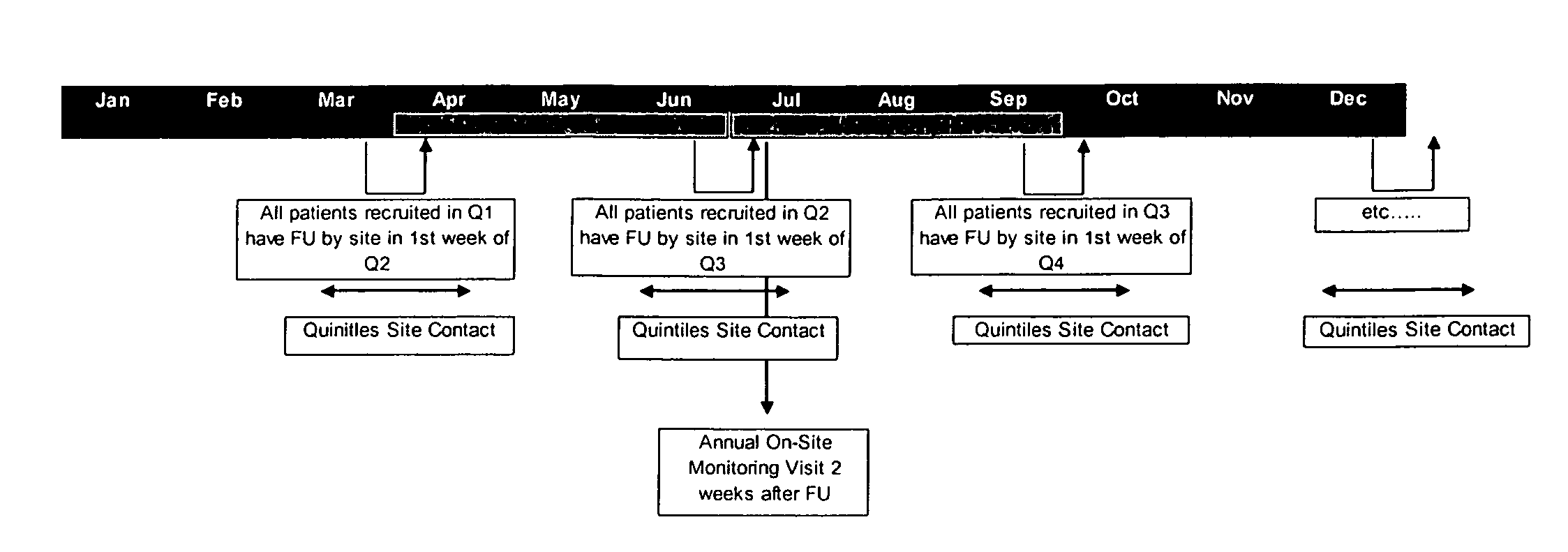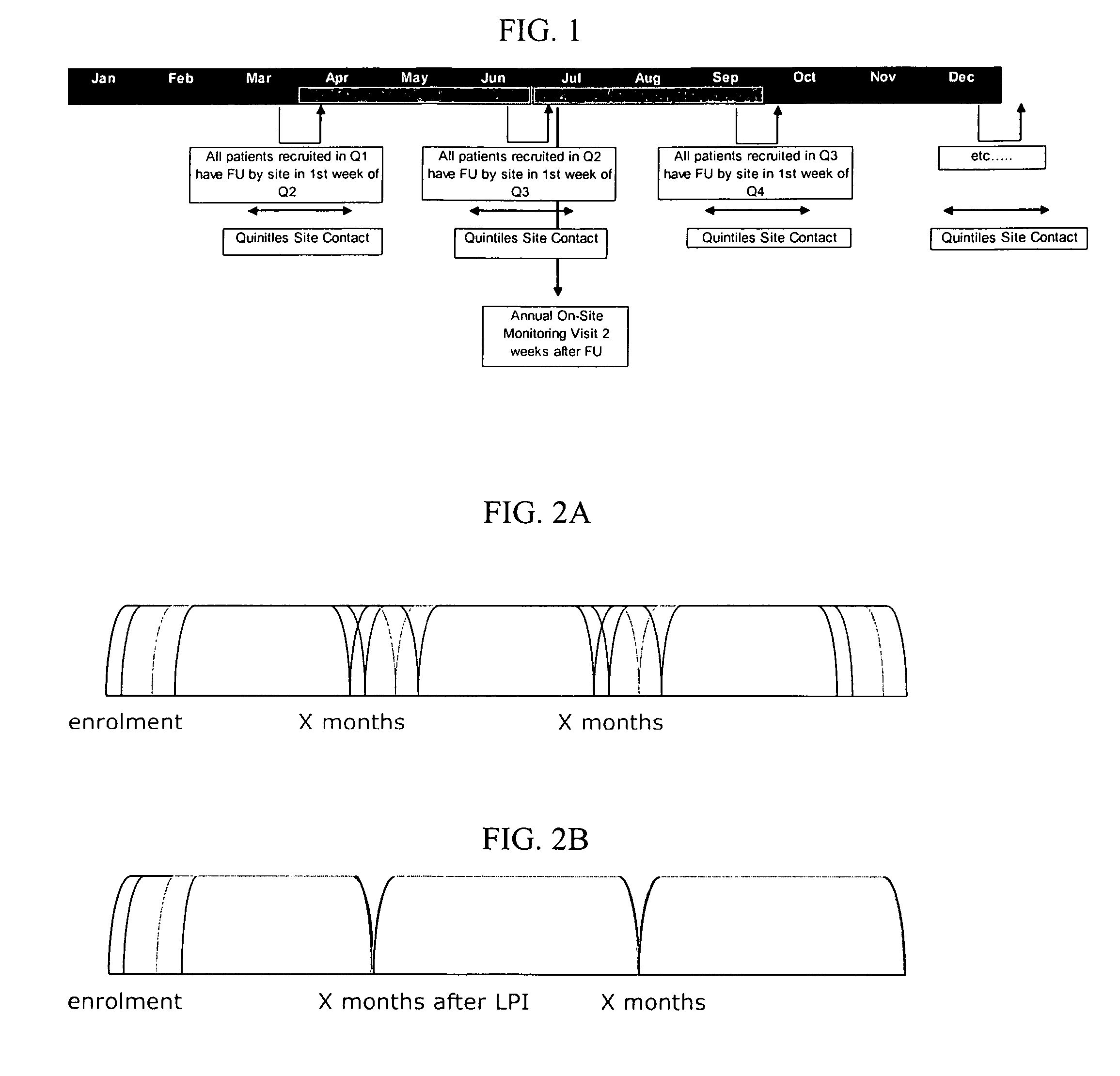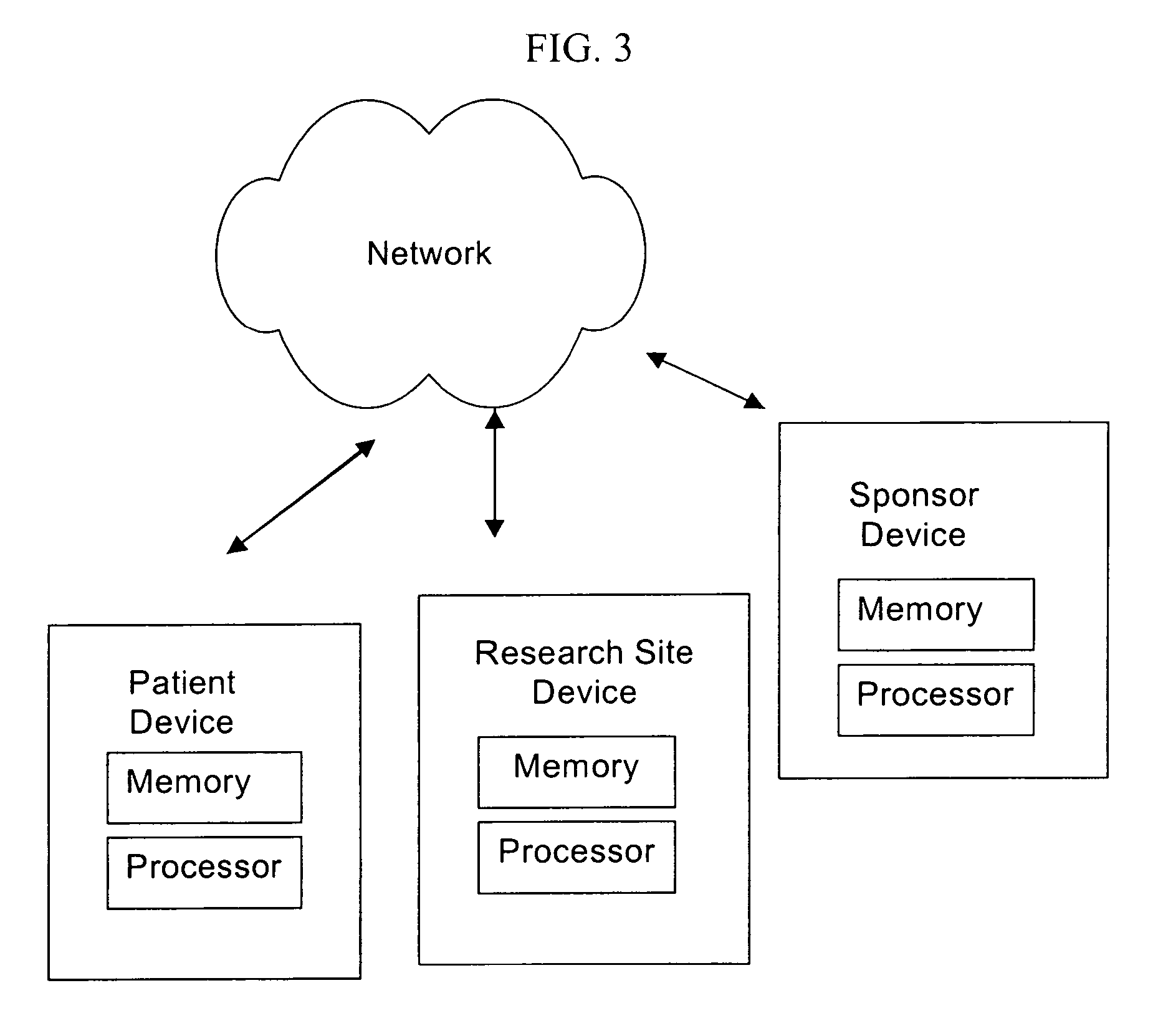Systems and methods for scheduling and sequencing sessions or appointments
a follow-up session and sequencing technology, applied in the field of systems and methods for scheduling and sequencing follow-up sessions or appointments, can solve the problems of increasing the cost of conducting studies, many challenges, and expensive and difficult management,
- Summary
- Abstract
- Description
- Claims
- Application Information
AI Technical Summary
Benefits of technology
Problems solved by technology
Method used
Image
Examples
Embodiment Construction
[0014]Embodiments of the present invention provide methods and systems for scheduling patients in a uniform and organized way, helping to improve patient retention and lower study costs and inefficiencies. Specific embodiments relate generally to systems and methods for batch follow-up sequencing and scheduling. These systems allow research sites to concentrate their efforts into a few, discrete activities per day, week or month that are intended to improve study performance and lower study costs and investigator fees. They are also intended to reduce site workload through more efficient follow-up. Such systems are further intended to reduce staff workload by concentrating site communications and required on-site staff during active periods at the site. They are further intended to simplify communication patterns with sites and patients, and potentially with a research sponsor.
[0015]In one embodiment, the systems and methods relate to scheduling patients to return for site visit fol...
PUM
 Login to View More
Login to View More Abstract
Description
Claims
Application Information
 Login to View More
Login to View More - R&D
- Intellectual Property
- Life Sciences
- Materials
- Tech Scout
- Unparalleled Data Quality
- Higher Quality Content
- 60% Fewer Hallucinations
Browse by: Latest US Patents, China's latest patents, Technical Efficacy Thesaurus, Application Domain, Technology Topic, Popular Technical Reports.
© 2025 PatSnap. All rights reserved.Legal|Privacy policy|Modern Slavery Act Transparency Statement|Sitemap|About US| Contact US: help@patsnap.com



